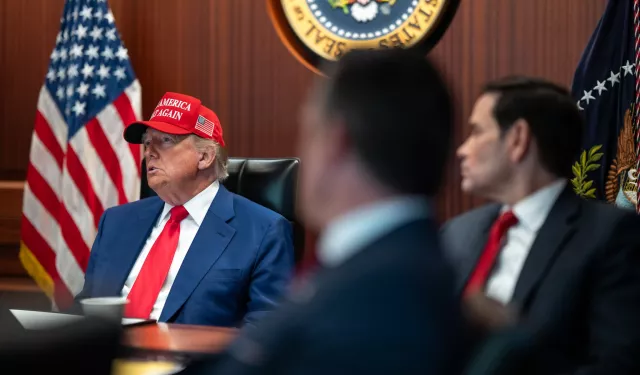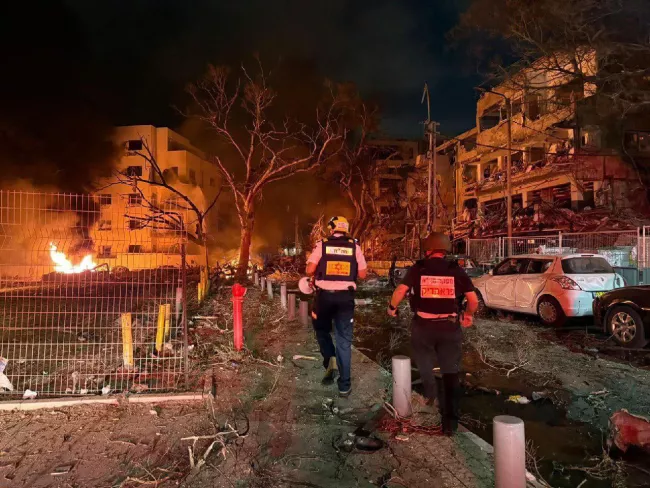
No happy ending after US strike on Iran
There will be no happy ending to Donald Trump’s decision to directly intervene in the Israel-Iran war by bombing three nuclear sites—Fordow, Natanz, and Isfahan—especially given the worsening trajectory of events in the region since the October 7th attack.
Trump’s assumption—and the optimistic projections surrounding it—is that Tehran will believe his post-strike speech, delivered two hours after the bombing, claiming it was a one-off strike to eliminate Iran’s nuclear program. He hopes Iran will comply with the threat and refrain from retaliating, fearing even more brutal and destructive attacks from a long target list.
However, Iran, governed by a unique political system dominated by Shia clerics, is feared by its Sunni-majority, oil-rich Gulf neighbors. It unquestionably has the means to set the entire region ablaze if it chooses retaliation, much as it has reacted to Israel’s intensified campaign.
That campaign, in its early stages, exposed the extent of infiltration into Iran’s ruling circles through the targeting of senior military commanders, nuclear scientists, key strategic sites and sensitive military installations.
Just one or two ships could block the Strait of Hormuz, through which 25% of the world’s oil and gas, particularly China’s, flows, potentially doubling oil prices and pushing the global economy into certain disaster. A handful of advanced drones armed with explosives would suffice to engulf the Gulf states in flames if they targeted oil and gas fields, as seen in the 2021 Houthi attacks on Saudi oil infrastructure.
Not far from those oil fields are numerous US military bases in the Gulf, Iraq, Syria, and Jordan—tempting targets within striking distance, requiring neither hypersonic nor intercontinental missiles. Alongside these nightmarish scenarios are several Iran-backed militias and armed factions poised for action.
Iran is not Syria
Still, if the region erupts, Iran will also burn facing US and Israeli attacks, aimed this time at toppling a regime that has opposed them for the past four decades and which Israel blames for the world’s ills, including Al-Aqsa Flood.
That attack, which humiliated Israel at the time, became the turning point after which Benjamin Netanyahu sought what he calls a “redrawing of the map of the Middle East"—not just by eliminating Hamas in Gaza, but by dismantling the regime that supports all so-called “Axis of Resistance” groups.
After reoccupying Gaza, containing Hezbollah, and witnessing the collapse of Syria’s former pro-Tehran regime, Netanyahu has now set his sights on the official patron as a necessary step to redraw the region’s map as he envisions it.
Netanyahu and his supporters dream of replicating the Syrian scenario in Iran, especially after US and Israeli attacks revealed the regime’s fragility and susceptibility to infiltration, which allowed the planting of Mossad agents inside Iran who launched missiles and drones smuggled in piece by piece over the years. So why couldn’t the June 13 attack become a popular uprising to topple the mullahs’ famously iron-fisted rule?
But Iran is not Syria. Its regime has not faced a sustained civil war involving nearly every global power as Bashar Al-Assad’s did. Despite enduring harsh American and international sanctions since its founding, Iran has survived and even managed to develop its military capabilities and expand its regional influence.
And despite the regime’s authoritarian nature and its focus on a Supreme Leader believed to be God’s representative on Earth, the Israeli and US strikes, contrary to the hopes of Tel Aviv and Washington, have only bolstered the regime’s popularity and strengthened social cohesion, instead of weakening it or sparking its collapse.
The ball is now in Iran’s court. Its leadership must decide whether to prioritize regime survival by absorbing the blows without a serious response, just as it did when Trump assassinated Qassem Soleimani, the Quds Force commander of the Revolutionary Guard, in Baghdad during his first term—or whether hardliners will prevail, pushing for escalation and leveraging all their pressure cards to inflict severe damage on American interests and the Gulf regimes that oppose them.
Iran’s leadership fully understands that the real issue the US and Israel have with it lies in its ideological stance, not in its nuclear or missile capabilities. Yet, despite its doctrinaire rhetoric, Iran also calculates pragmatically, guided by long-term strategy.
Thus, if it can contain the reckless Trump during the remainder of his term, the struggle with the “Great and Lesser Satans” may continue without reaching a tipping point that would ignite the entire region.
The most important lesson
Ultimately, the key takeaway from the US attack on Iran is that Trump is not to be trusted.
He and Israel masterfully misled the world, giving the impression of serious disagreements between Washington and Tel Aviv over striking Iran. Trump appeared to resist Israeli pressure to be dragged into war while purportedly seeking a deal with Tehran and regional peace, claiming Israel was acting unilaterally.
Today, it is clear that Trump’s meetings with Netanyahu since he occupied the White House on Jan. 20 were about agreeing on this strike, planning its execution, and coordinating what would follow. Trump’s post-strike speech even described the two countries as a “great team” working in full coordination.
Even Netanyahu’s sudden summons to Washington last April wasn’t to be briefed on Trump’s intentions to negotiate with Iran, but to finalize plans for the upcoming military strikes, aligning with Netanyahu’s vision of redrawing the Middle East.
That map is indeed taking shape. Unless Iran reacts recklessly, endangering its own regime, short-term dominance will go to Israel and Washington’s Gulf allies.
Although Gulf states, especially Saudi Arabia and the UAE, were quick to condemn Israel and express concern over regional escalation, their governments will likely welcome a scenario in which successive US and Israeli strikes curb Iran’s power and prevent it from threatening their nations as the region’s most formidable force.
Egypt will remain a crucial and influential player in shaping the region’s future thanks to its strategic location and significant military strength. But the real decision-making power in the years ahead will lie with Trump’s core regional allies— Israel and the oil-rich Gulf states that have pledged him over $2 trillion in investments.
Published opinions reflect the views of its authors, not necessarily those of Al Manassa.

